Supervised vs Unsupervised vs Reinforcement Learning – The three main categories of machine learning. Why these boundaries have been drawn and what they look like will be discussed in this article. The knowledge about this is an elementary part to understand machine learning correctly and to be able to apply it to data in a meaningful way.
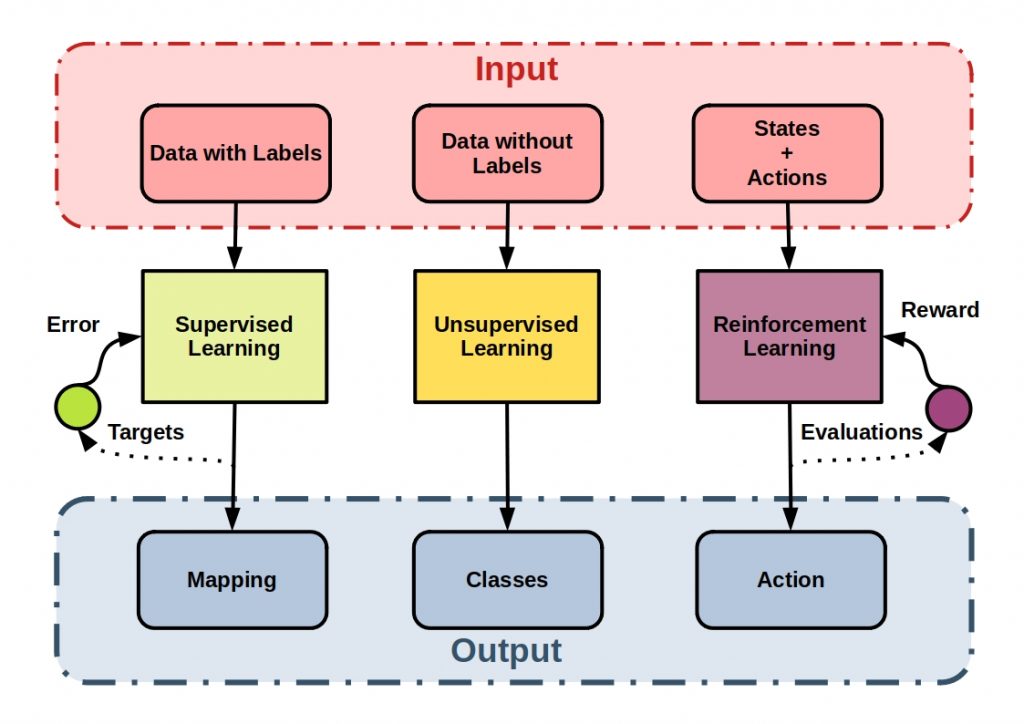


Table of Contents
Supervised vs Unsupervised vs Reinforcement Learning – Machine Learning Categories
Machine learning is a branch of artificial intelligence. While AI deals with the functioning of artificial intelligence and compares it with the functioning of the human brain, machine learning is a collection of mathematical methods of pattern recognition. If you want to know more about the differences between Machine Learning, AI and Deep Learning, read our article on the subject. IT systems should be given the ability to automatically learn from experience and improve. Algorithms play a central role here. These can be classified into different learning categories.
In the following figures the three main categories of machine learning methods are shown.
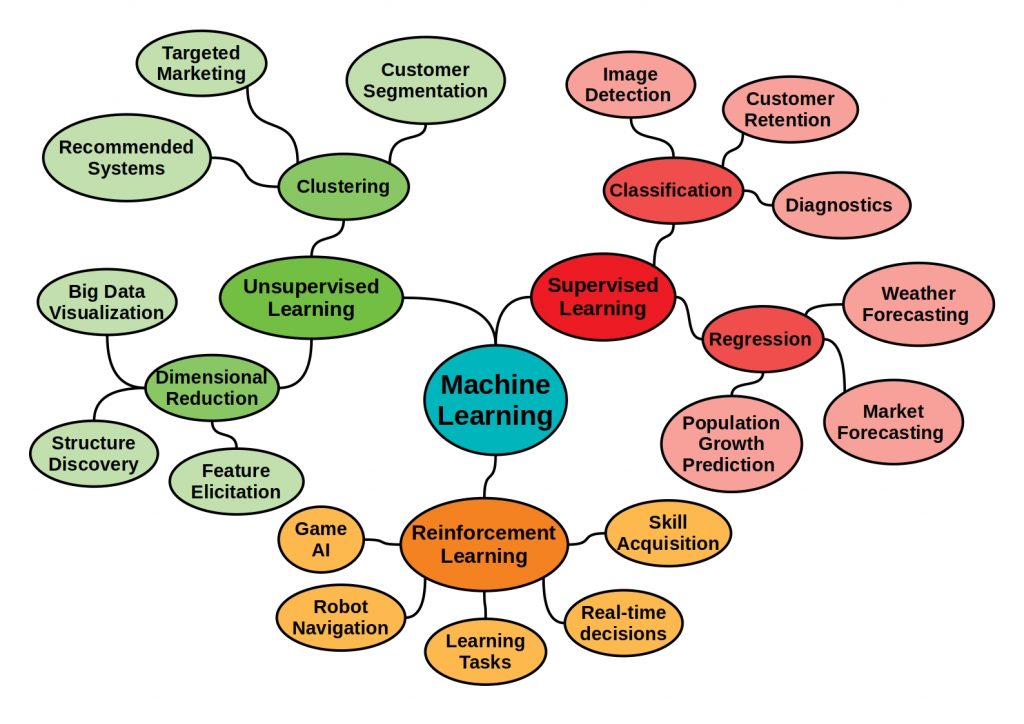


In the meantime, there are many more categories, some of which are hybrids of the individual main categories. One example is semi-supervised learning. This is certainly also a major machine learning topic, but has been left out for the time being for the sake of simplicity.
What is supervised learning?
In supervised learning, the machine learning algorithm iteratively learns the dependencies between data points. The output to be learned is specified in advance and the learning process is supervised by matching the predictions. How the The optimized algorithm is to apply the learned patterns to unknown data to make predictions.
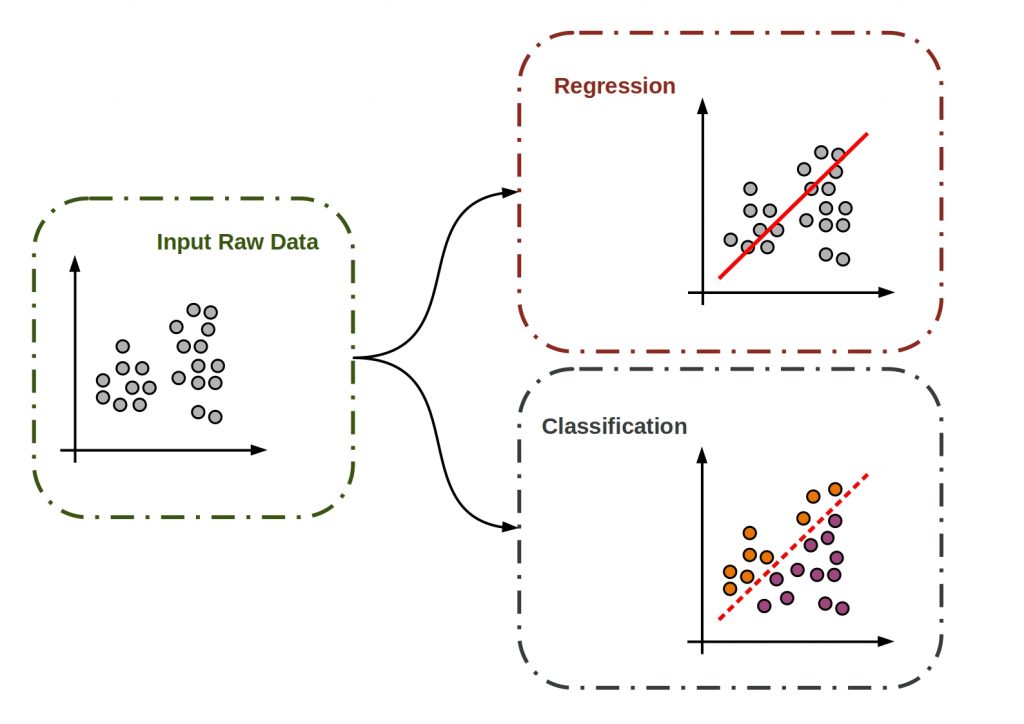


Supervised learning methods can be applied to regression, i.e., prediction, or trend prediction, as well as classification problems.
What is supervised classification?
In classification, abstract classes are formed in order to delimit and order data in a meaningful way. For this purpose, objects are obtained on the basis of certain similar characteristics and structured among each other.
Decision trees can be used as prediction models to create a hierarchical structure, or the feature values can be assigned as class labels and in the form of a vector.
In the following figure the most important supervised classification algorithms are listed.
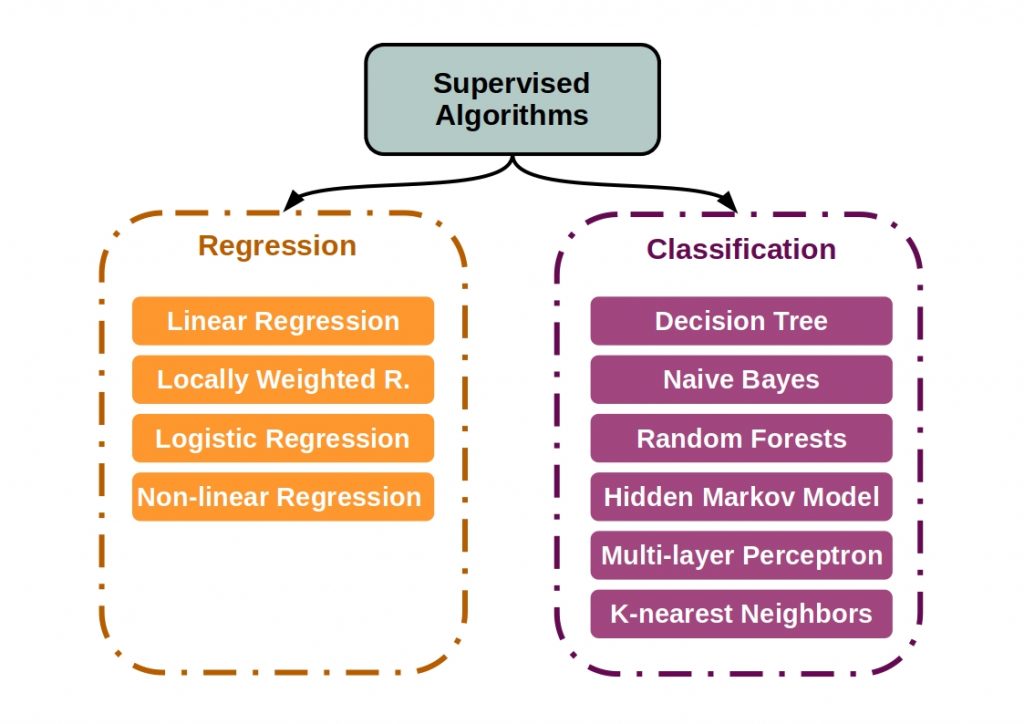


What is supervised regression?
On the other hand, supervised regression algorithms can be used to make predictions and infer causal relationships between independent and dependent variables.
For example, linear regression can be used to fit the data to a straight line or, conversely, to fit a line to the data object.
We have discussed the exact process of linear regression here in this article.
What is unsupervised learning?
In unsupervised learning, patterns are determined in data without initial patterns and relationships being known.
Especially in complex tasks, these methods can be useful to find solutions that would hardly be solvable by hand. An example is autonomous driving, or large biochemical systems with many interactions.
One key to success is a huge data set. The more data available, the more accurate models can be created.
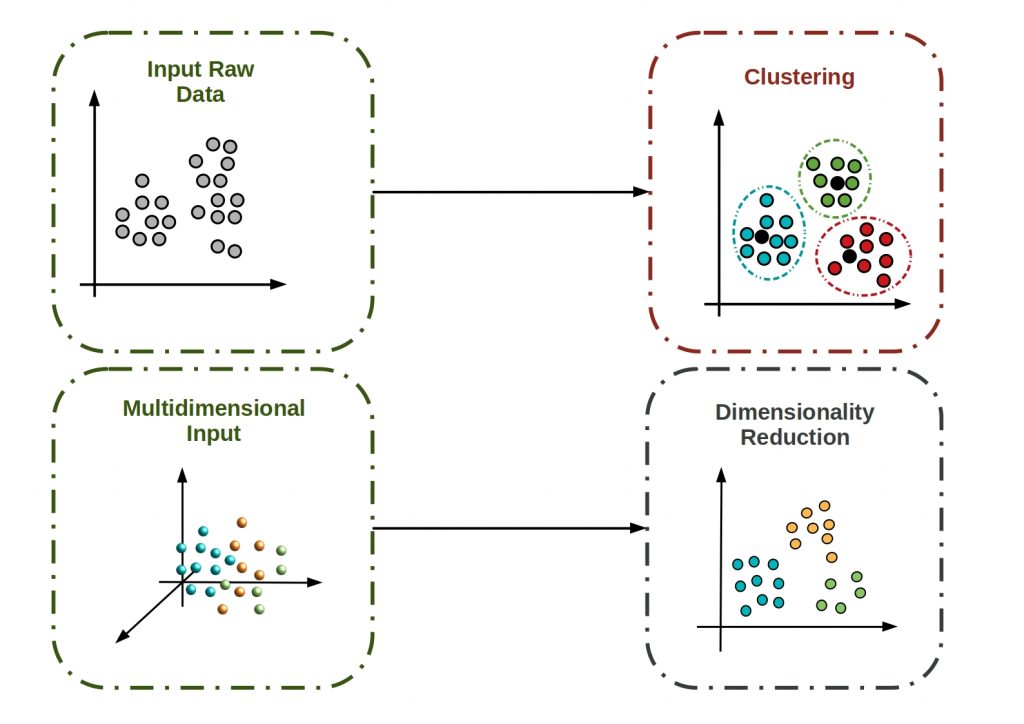


In unsupervised machine learning methods, two basic principles, which also classify the algorithms used, can be distinguished. The clustering and the dimensional reduction.
What is unsupervised clustering?
The main goal of unsupervised clustering is to create collections of data elements that are similar to each other, but dissimilar to elements in other clusters. The figure below shows some of the main clustering algorithms.
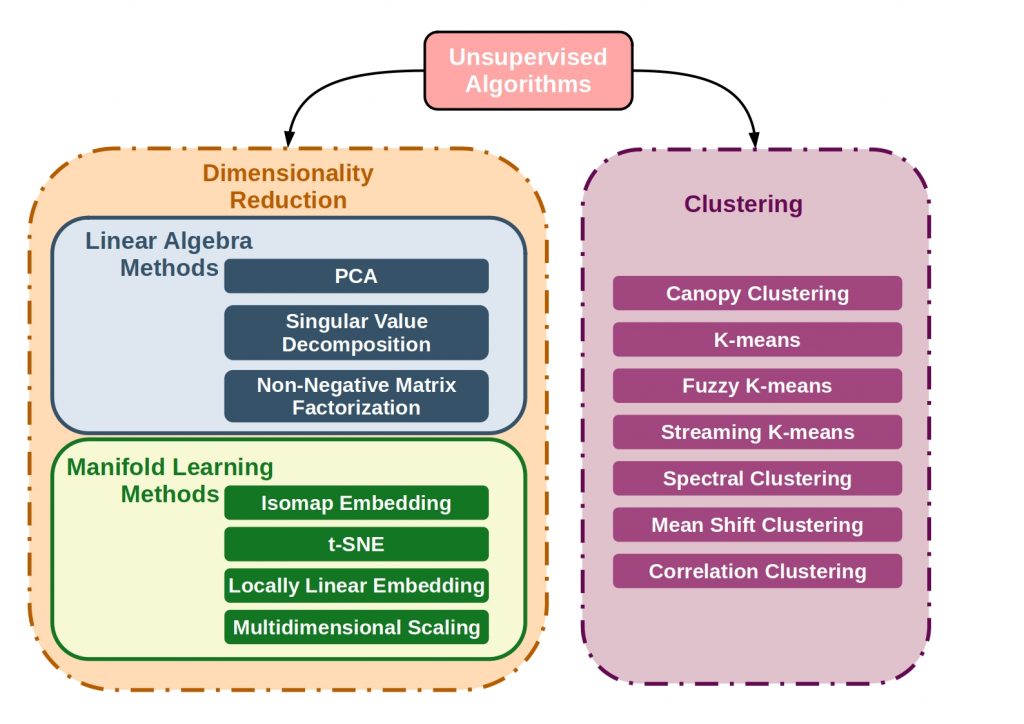


The clustering algorithms differ primarily in the cluster creation process, but also in the definition of such clusters. Thus, the relationships between clusters can also be used and hierarchical relationships can be explored.
What is unsupervised dimensional reduction?
With a high number of features, high dimensional relations can be translated low dimensional with these transformation methods. The goal is to keep the loss of information as small as possible.
The reduction methods can be divided into two main categories: Methods from linear algebra and from manifold learning.
Manifold learning is an approach to nonlinear dimensionality reduction. Algorithms for this task are based on the idea that they can learn the dimensionality of the data without a given classification and project it in a low-dimensional way.
For example, from the field of linear algebra, matrix factorization methods can be used for dimensionality reduction.
What is reinforcement learning?
In reinforcement learning, a program, a so-called agent, should independently develop a strategy to perform actions in an environment. For this purpose, positive or negative reinforcements are conveyed, which describe the interaction interactions of the agent with the environment. In other words, immediate feedback on an executed task. The program should maximize rewards or minimize punishments. The environment is a kind of simulation scenario that the agent has to explore.
The following figure describes the interactions of all components of a reinforcement learning process.
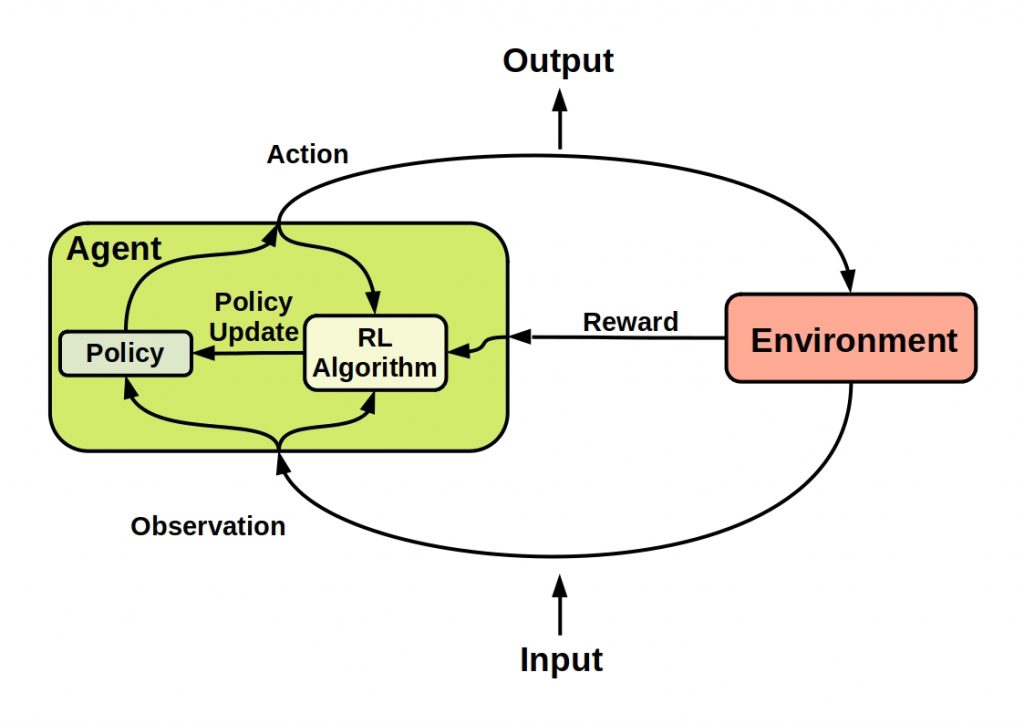


There are two basic types of reinforcement learning.
Namely, whether the environment is model-based or not.
In model-based RL, the agent uses predictions of the environment response during learning or action.
If no model is available, the data is generated by trial and error.
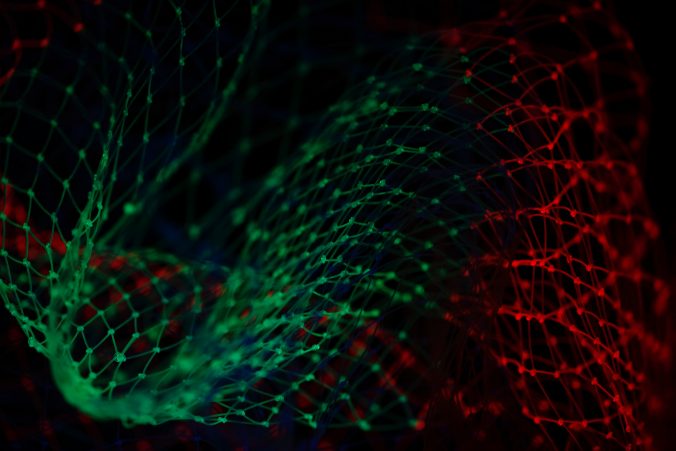
0 Comments
1 Pingback